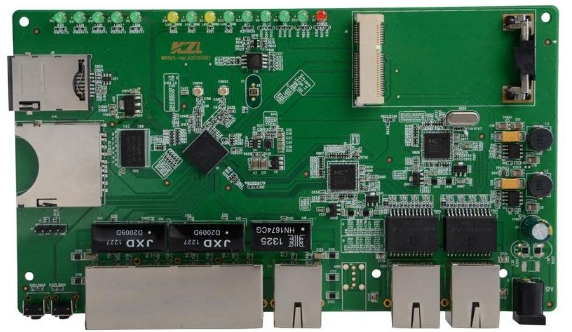1. Development Background
PCBA is a printed circuit board whose components have been assembled. PCBA is widely used in aviation, numerical control, computer, automatic instrument and other fields. Due to the requirements of manufacturing and logistics factors, the process edge should be reserved at the edge of the PCBA board to achieve the purpose of turnover, but this process edge is not needed for products. Therefore, the process edge of PCBA board needs to be removed after the components are assembled.

The methods of removing the process edge of PCBA board can be roughly divided into three categories: V-cut cutting machine, milling cutting machine and manual removing process edge. Such as purely in terms of its quality, milling machine cut points (also called type cutter machine, curve points machine) effect, overcomes the V - cut machine only linear integral limits, which make use of high speed milling cutter will be more continuous PCBA apart according to the programming path in advance equipment, replace artificial fracture or V - cut cutting defects, improve product quality, Reduce scrap rate, the disadvantage is expensive, cumbersome operation (need programming); The price of V-cut plate splicer is much cheaper. The blade cuts along the V-groove of PCBA, but it can only cut in a straight line, and the cost of blade consumables is relatively expensive. V-cut plate splicer can be divided into knife type and plate type according to the cutting mode (see Figure 1 and Figure 2). Manually remove the process side by hand breaking or using tools such as needle-nose pliers for segmentation, has the advantages of low cost and easy to use, but easy to cause stress damage to components.
For small batch, multi-variety and low-cost manufacturing requirements, it is practical to remove plate edges manually, but the contradiction between batch, cost and reliability is highlighted. In order to solve these problems, we developed a simple tool for manually removing the process edge of PCBA board, which gives full consideration to these aspects and solves the above contradictions to a certain extent.
2. Tooling design scheme
The tool achieves the purpose of removing the process edge through simple mechanical structure, so the cost is low. Through a series of adjustable structure, it can meet the needs of adapting to different sizes and thicknesses of the process edge. Through mechanical fixation, the stress on the PCBA board during the process of removing the process edge is reduced, and the purpose of improving the operation quality and effect is achieved. In this way, the utility model can meet the requirements of multiple varieties, low cost and high quality when removing process edges, so it is a practical, convenient and cheap auxiliary device.
The tool adopts the following technical scheme: an adjustable auxiliary device for manually removing the PROCESS edge of PCBA board, including the installation of the bottom plate, slider base, movable slider, adjusting button and transmission structure. By manually adjusting adjustment button via the transmission structure to drive the movable sliding block along the slider at the base of the set moving orbit, and after the appropriate distance will PCBA board need to remove the card slot, the technological edge into the device holding the PCBA board below along a direction gently pressure, manual removal process can be realized the function of the edge, the concrete principle of work can be seen in figure 3. It should be noted that both hands should not hold the upper part of PCBA, so that although it saves effort from the perspective of lever principle, the stress generated is also easy to cause damage to PCBA.
As a preferred implementation, the mounting base plate of the tooling may be a worktable or other form of worktable, not limited to the form of the base plate; The sliding block base and movable sliding block can be straight bayonet dovetail groove fit or other movable fit and structure form, not limited to various types of movable fit and structure form; The adjustment button can be manual rotation adjustment or other forms of adjustment button, not limited to the form of adjustment button; The transmission structure can be bevel gear transmission or other forms of transmission structure, not limited to the transmission structure.
Compared with the prior art, the tooling has the following advantages:
(1) Low production cost;
(2) Simple operation;
(3) The removal edge quality is good, and the stress of components on PCBA board is small;
(4) Wide application range, can adapt to different thickness and plate margins of PCBA board;
(5) Flexible and convenient structure, can be manually adjusted to adapt to various thickness and size of the process edge of the PCBA board.
3. Conclusion
The auxiliary device of the utility model is applied to remove the process edge of THE PCBA plate manually, which not only takes into account the stress control demand of PCBA when removing the process edge, but also takes into account the cost control of production. In this way, the tool can replace the high-cost special equipment, so it is a practical and convenient, flexible and can reduce the overall cost of the auxiliary device, can be widely used in THE PCBA process edge removal, become a reliable solution. The utility model has been applied for this tooling design.